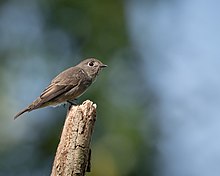Birders from around the
continent are taking flight to an obscure patch of South Surrey farmland to see
a striking little bird that belongs in Asia — the Siberian Accentor.
By Larry Pynn, Vancouver
Sun
METRO VANCOUVER --
Birders from around the continent are taking flight to a patch of south Surrey
farmland to see a striking little bird that belongs in Asia — the Siberian
Accentor.
“This particular bird is
in an easily accessible area,” George Clulow, president of B.C. Field
Ornithologists, said in an interview Friday.
“People can easily fly
in, which is what they’ve been doing from all over North America. I was
standing next to people from Massachusetts, California, Florida, Minnesota.”
There are only six or
seven recorded sightings of the wayward bird in B.C., Clulow noted. Normally it
is found in Southeast Asia and breeds across Siberia.
Clulow first spotted the
Siberian Accentor with fellow birder Mandy Lu on Jan. 3 during the annual
Christmas Bird Count, an event that forces birders to look in unusual and
less-visited areas to help pump up their counts.
They were in an
agricultural area on 160th Street when he noticed small birds flying in a
blueberry field. “I turned around and saw this bird for a split second perched
in a blueberry shrub,” he recalled.
“It dropped down and we
couldn’t find it. It was a bird I’d never seen before — sparrow-sized but with
a striking head pattern (featuring dark and rust stripes).”
That evening at home he
pulled out a reference book, Rare Birds of North America, and there on the
cover was a photograph of the Siberian Accentor. “That’s it. That made it
easier.”
He returned three days
later and after four hours had a good sighting of the bird, snapped a few
photos to confirm identification and posted it on the Internet. “It just went
viral from there,” he said. “It’s a rare bird.”
The bird has remained at
the site ever since, with continued sightings this week. It is often seen
feeding on the ground with dark-eyed juncos.
To reach the site head
east on No. 10 Highway toward Cloverdale, turn right (south) on 160th Street,
cross the railway tracks and look for the birders.
